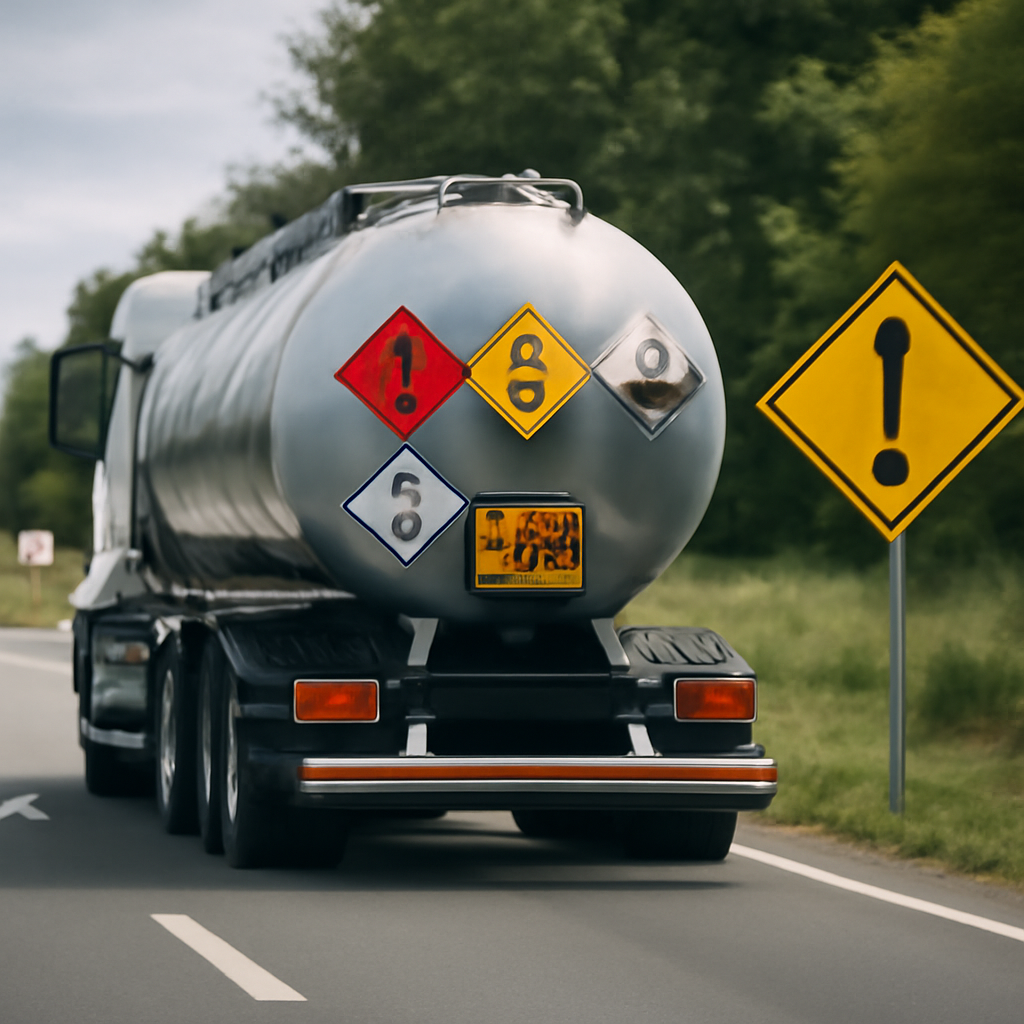
🚛 DDS – SAFE TRANSPORTATION OF HAZARDOUS MATERIALS
Duration: 10 minutes Date: Facilitator:
🎯 OBJECTIVE
Raise awareness about the risks of transporting hazardous materials and the importance of proper identification, signage, and special care during handling, loading, and transportation of these materials.
⏱️ 4 MINUTES 📖 INTRODUCTORY STORY
João was an experienced driver for 15 years… One Monday morning, João received a different load: drums containing chemical products. He noticed the colorful labels and strange symbols, but since he was in a hurry, he didn’t bother to understand what they meant.
During the journey, one of the drums began to leak. João stopped on the shoulder and, not knowing it was corrosive material, tried to clean it with his hands. Result: severe burns that kept him away from work for months.
What didn’t João know?
The symbols and numbers on the drums (like “UN 1789 – HYDROCHLORIC ACID”) indicated exactly the type of danger and how to act in emergencies.
Daily situations where we encounter hazardous materials: Gas stations (Gasoline – UN 1203) Gas trucks (LPG – UN 1075) Transportation of cleaning products Hospital and pharmaceutical materials Paints and solvents
⏱️ 4 MINUTES 🔍 DEVELOPMENT
Introduction to the Topic (2 minutes)
What defines a hazardous product?
Any product that poses a risk to people’s health, the environment, or public safety. It can be found in nature or produced industrially.
Important difference: HAZARD:
Property of the substance (ex: flammable) RISK: Probability of causing damage during transport
Main Points (2 minutes)
- Identification System UN Number: International identification (ex: UN 1203 = Gasoline) Risk Labels: Colored symbols indicating danger Safety Panels: Numbers on the outside of the vehicle
- Main Risk Classes 🔥 Class 1: Explosives ⚗️ Class 2: Gases 🔥 Class 3: Flammable liquids 🧪 Class 8: Corrosive substances
- Essential Preventive Measures Always check mandatory documentation Verify adequate packaging and signage Use appropriate PPE during handling Know emergency procedures Never improvise or ignore protocols
Interactive Discussion (1 minute)
- Has anyone worked with transportation or handling of chemical products? What precautions did you take?
- Can you identify risk symbols when you see a truck on the road?
- In case of an accident, what would be the first action before approaching the vehicle?
⏱️ 1 MINUTE ✅ CONCLUSION AND COMMITMENT
Key points to remember: Hazardous materials require identification and special care Labels and UN numbers save lives in emergencies Never underestimate risks – always follow procedures When in doubt, stop and consult specialists
TODAY’S COMMITMENT: “Today we commit to always verify proper identification before handling any chemical product or participating in loading/unloading operations.”
“Safety doesn’t happen by chance. It’s the result of knowledge, preparation, and responsibility from each one of us. Properly identified and handled hazardous materials protect lives!”
📋 LEARNING VERIFICATION
- What does the UN number on packaging mean?
- Name 3 essential precautions when transporting hazardous materials.
- What’s the difference between a risk label and a safety panel?
📚 SUPPORT MATERIAL
Poster with main risk symbols Safety panel example List of most common UN numbers Summarized emergency procedure
PARTICIPANT’S NAME SIGNATURE POSITION
The Secret That Dangerous Products Whisper
But there’s something few people know about dangerous products: they whisper their secrets through almost imperceptible signs. A vapor that forms in a strange way, a subtle change in coloration, an odor that shouldn’t be there… These are silent warnings that something is about to happen. More experienced workers develop a kind of “sixth sense” to detect these anomalies before they become catastrophes.
Perhaps the real mystery isn’t in the classifications or numbers of substances, but in the human ability to sense danger even before instruments detect it. Those who master DDS-015 don’t just know the rules – they develop an almost supernatural connection with the environment around them, becoming the true guardians of the chemical secrets that surround us daily.


0 Comentários